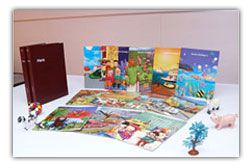

2 to 6
Toddler, Primary, Junior, Senior Class

Textbook- 14 levels
Activity book- 12 levels + 2 CDs

The teaching goals of Human Ecology System (HES) simply based on both children’s psychological and physical developments. It represents in the following areas such as language, science and nature, math, spatial concept, music, human body, and social relations. It is important for us to inspire children’s learning potentials by instilling them the ability of problem solving, cognition towards various areas and sensory developments. A complete education system makes great holistic education.

There are twelve monthly theme topics based on the teaching goals and lesson structures. They are extensively related to children’s daily experiences and knowledge.
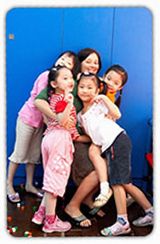 Toddler Class:
Toddler Class:
We widely provide social-related experiences and concepts to this age group who is learning about their senses and needs by interacting with classmates.
Primary Class:
The introduction of life surrounding to this group of children is the key of the curriculum. Also this group of children will learn about their family, self-consciousness and peer-interaction.
Junior Class:
The accumulated learning experiences and cognition of life surroundings help this group of learners acknowledge different ethnics and cultures. Therefore, the ideas of being respectful to lives, being thankful and generous are well extended under this category. These are the key elements of HES curriculum.
Senior Class:
For this level of learners, HES emphasizes on self-assurance, and knowledge of the environments from home to the universe. Knowing the importance of environmental protection, ecology and nature phenomenon is additionally introduced in this system. The combination of such completes this level of HES curriculum.

Four main steps of teaching Human Ecology System (HES):Warm Up, Group Discussion, Extended Activity, Wrap Up. The teachers will apply these 4 steps in each lesson.
Warm Up:
To teach HES, teachers provide diversified audio / video aids, books, nursery rhymes, and songs to inspire children’s interests.
Group Discussion:
Steps: Question, Discussion, Exploration, Seminar. Teachers lead children through these four steps plus some related photos and teaching aids to extend and concrete theme topics.
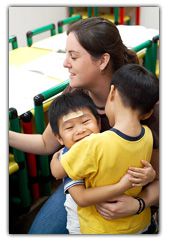
Extended Activity:
Excursions are held periodically in order to consolidate the understanding of theme topics. Children will also make topic-related artwork such as, painting, book making, role-play and activity book exercises to practice their understanding.
Wrap Up:
Our kindergarten holds performances periodically. We teach children to make little books, and creative works to show what they have learned at school. Parents are invited to such events. At the end of each class, we encourage children to pack away their own books and toys.

1. Pictures, tables, graphs, flashcards:
Lots of imported pictures, tables and models help the children integrate the concept of Learning by Doing.
2. Interesting children’s storybooks, colorful picture books and DVDs:
Visual excitement always helps children to learn a foreign language effectively and productively reinforce daily life observation.
3. DIY props:
Introduce recycled resource to make topic related props may bring joy and inspire children's creativity and love towards the Earth.

Toddler class: To establish self-cognition learning experience.
Primary class: To introduce basics and knowledge of the daily happenings.
Junior class: To extend and apply concrete class activities.
Senior class: To apply what they have learned into their daily lives.
1. Life and Culture theme-based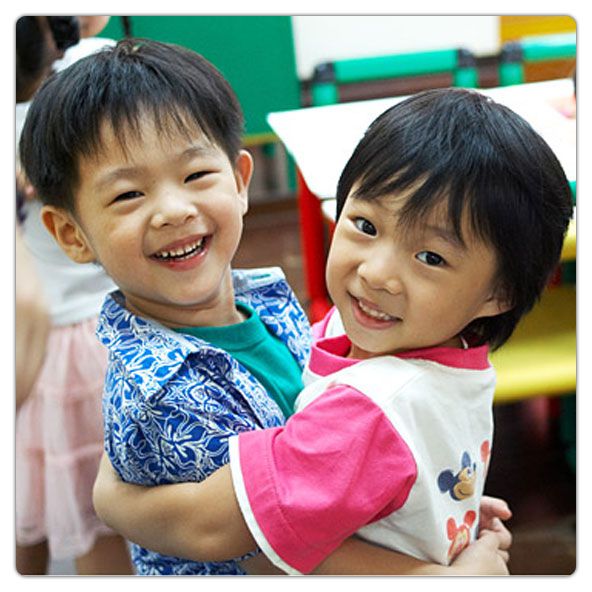
a. The characteristics and customs of the
living environment.
b. Fun playground facility and PE activities.
c. Culture background of historic heritage
and relic.
2. Social activity theme-based
a. Professions and Occupations
b. Organizational and charity activities
c. Public events related to environmental protection
3. Human body exploration theme-based
a. Cognition of physical, body structure and body function
b. How human grow and the features of different levels
c. Hygiene, health and nutrition, disease and medicine
d. Self-acknowledgement, peer/ group interaction
4. Life and Nature theme-based
a. Cognition of number, quantity and shape
b. Knowing animals / plants, their life patterns and growth
c. Observation, exploration and applied activities.
d. Phenomenons of the earth and the universe
5. Art theme-based
a. To know about Color Science
b. Drama, art, music, design, sculpture, architecture etc.
c. Application of photography and graphic design
d. Giving performances by applying dance, craft, drama, music etc.
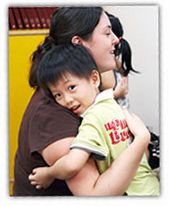 6. Ethnic groups theme-based
6. Ethnic groups theme-based
a. To know lineal descent, collateral relatives and family
relationship
b. Historic background of the country’s ethnic groups
c. The distribution and characteristics of worldwide ethnic groups.
7. Technology theme-based
a. Water, fire, electricity and other energies.
b. Daily life related appliances
c. Transportation, telecommunication etc.
8. Environment theme-based
a. Every related object that children may see at home or school.
b. Society , community and infrastructures.
c. Nature scenes and geographic characteristics of the country.
d.Well-known worldwide natural sites, scenes and their ecological characteristics.



